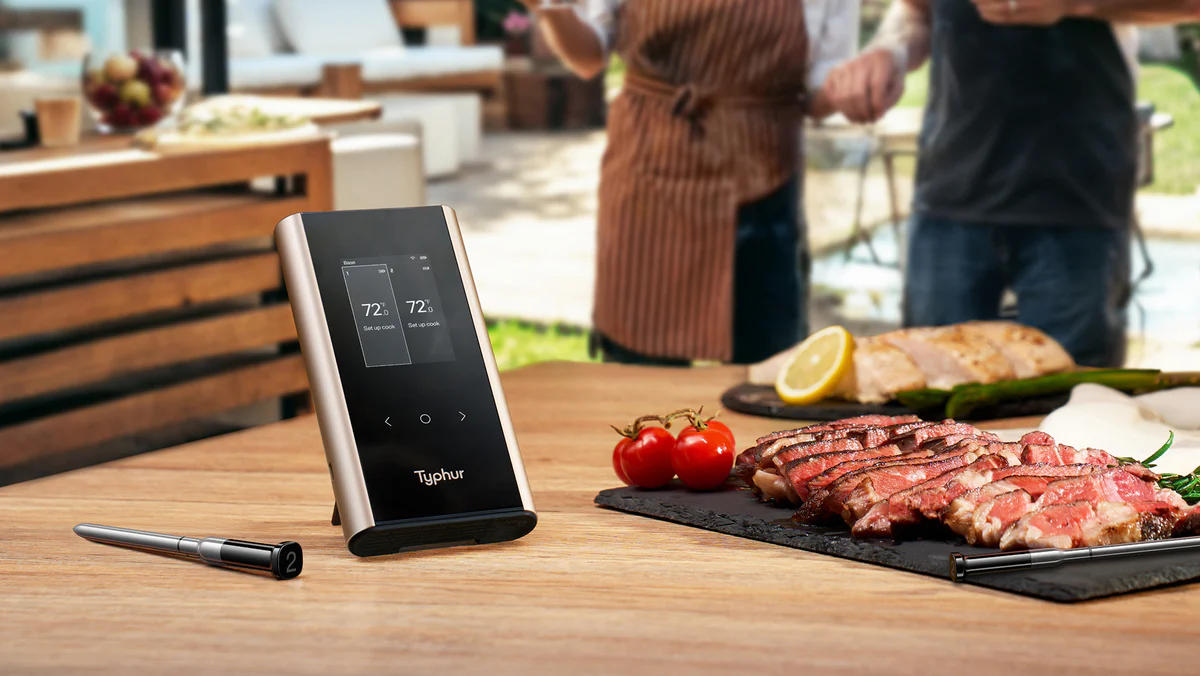Cooking meat to the perfect level of doneness is one of the biggest challenges for home chefs. Whether you're preparing steak, poultry, or pork, achieving that ideal balance between juicy and safe can be surprisingly tricky. That’s why having the right tools—like a wireless meat thermometer—can make all the difference. This simple device helps you track internal temperatures without hovering over the stove or grill, ensuring precision and peace of mind every time you cook.
While technique and timing are crucial, understanding temperature and how meat behaves during the cooking process is key to mastering meat preparation at home. Let’s explore practical tips that help home cooks consistently serve meat that’s not only safe to eat but also packed with flavor and moisture.
Know the Safe Temperatures for Different Meats
First and foremost, safety matters. Undercooked meat can carry harmful bacteria, while overcooking can dry out even the best cuts. The USDA recommends specific internal temperatures for different types of meat:
Chicken and Turkey (whole or ground): 165°F (74°C)
Beef, Veal, and Lamb (steaks, roasts): 145°F (63°C) with a 3-minute rest
Ground meats (beef, pork, lamb): 160°F (71°C)
Pork (chops, roasts, tenderloin): 145°F (63°C) with a rest period
Fish: 145°F (63°C)
A wireless meat thermometer can help you hit these numbers accurately, alerting you when your meat has reached its target temp—no guesswork, no cutting into the meat and losing valuable juices.
The Typhur Sync Gold Dual Wireless Meat Thermometer is a top-of-the-line option for precision cooking. With its dual probes, you can monitor both the internal temperature of the meat and the ambient temperature of the grill or oven. The Typhur Sync Gold Dual also offers wireless monitoring with a range of up to 3000 feet, so you can keep track of your meat without needing to hover over the grill. Whether you’re grilling, roasting, or smoking, this thermometer ensures your meat reaches the perfect temperature with ease.

Let Meat Rest After Cooking
One of the most common mistakes home chefs make is skipping the rest period. When meat is removed from the heat, its internal temperature continues to rise—a process known as "carryover cooking." Letting meat rest allows the juices to redistribute evenly throughout the meat, preventing dryness.
As a general rule, let steaks and pork rest for 5 to 10 minutes and larger roasts or poultry for 15 minutes before slicing. If you're using a wireless meat thermometer, you can monitor the temperature during this resting period to see when it stabilizes.
Use the Right Cooking Method for the Cut
Not all meats are created equal. Different cuts require different cooking techniques to bring out their best qualities.
Lean cuts (like chicken breasts or pork tenderloin) benefit from quick, high-heat methods such as grilling, broiling, or searing.
Tougher cuts (like brisket or chuck roast) require low and slow methods like braising or slow-roasting to break down connective tissues and become tender.
Fatty cuts (like ribeye or duck) need careful rendering to achieve a crispy exterior while keeping the inside juicy.
Understanding the nature of the cut you’re working with will help you choose the right technique—and a thermometer helps you know exactly when to stop cooking.
Marinate or Brine for Extra Flavor and Moisture
Marinating and brining are two tried-and-true methods for enhancing meat’s texture and flavor. Marinades typically contain acids like vinegar or citrus juice, which break down muscle fibers and allow flavor to seep in. Brining, on the other hand, uses a saltwater solution that helps meat retain moisture during cooking.
These methods are especially helpful for lean meats that are prone to drying out. A wireless meat thermometer lets you push these benefits further by ensuring you don’t overcook the meat and undo the effects of your careful prep.
Don't Rely on Appearance Alone
A golden-brown crust doesn’t necessarily mean your meat is cooked through. Visual cues like color, texture, or even the “finger test” can be helpful, but they’re not always reliable—especially with thicker cuts or meat cooked in the oven. Only a thermometer can provide the level of accuracy needed for consistent, perfect results.
This is where a wireless meat thermometer earns its place in your kitchen. It gives real-time updates without requiring you to open the oven or lift the grill lid, which can release valuable heat and extend cooking times.
Cooking for a Crowd? Plan Strategically
When cooking multiple pieces of meat—like a whole tray of chicken thighs or a couple of different steaks—remember that not all pieces will cook at the same rate. Size, thickness, and placement all play a role. A thermometer with multiple probes can help you track more than one piece at once, but even with a single-probe setup, you can check the thickest portion and adjust from there.
Stagger cooking times if needed, and keep resting meat loosely tented in foil to maintain warmth while finishing the rest. Timing and temperature management are your best friends when serving multiple people.
Final Thoughts
Perfectly cooked meat is a balance of art and science. While experience and instinct play a role, the most consistent results come from knowledge and the right tools. Investing in a wireless meat thermometer is one of the smartest steps a home chef can take toward mastering meat cookery. It takes the pressure off and adds a level of control that even professional chefs rely on.
Whether you're preparing a Sunday roast, hosting a barbecue, or just making weeknight dinners, understanding meat and how to cook it properly will elevate your meals—and your confidence in the kitchen.